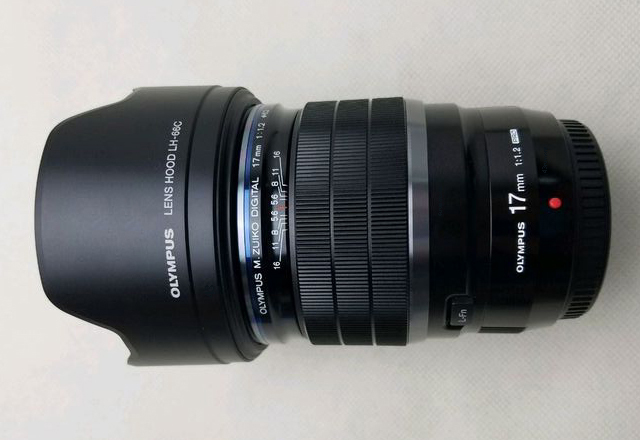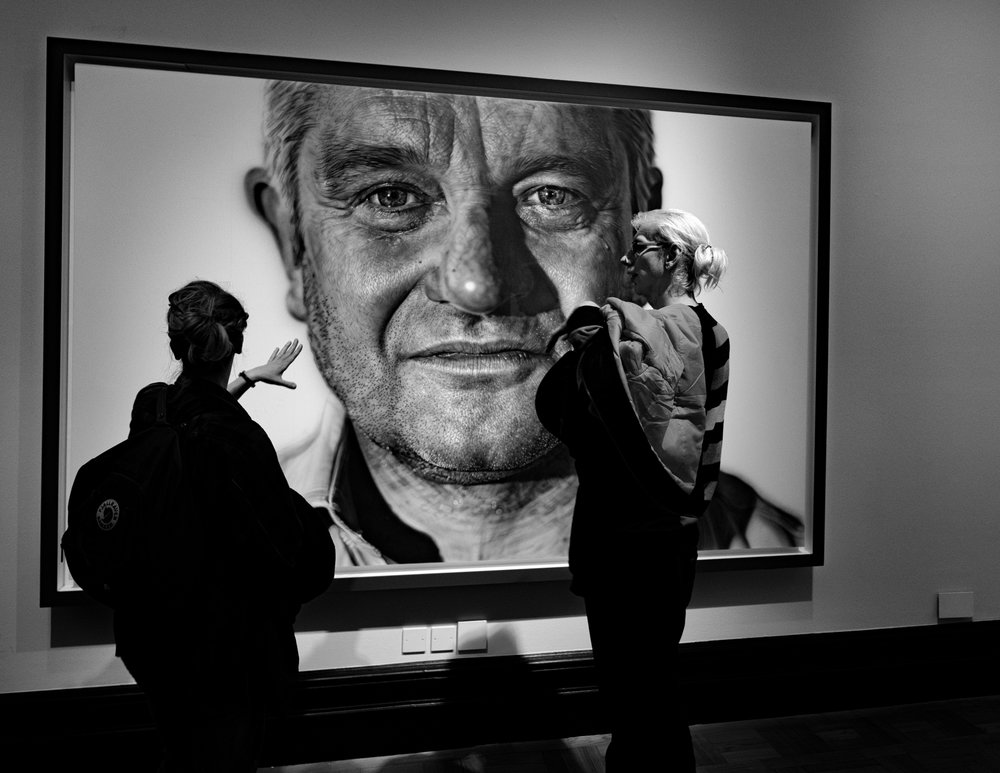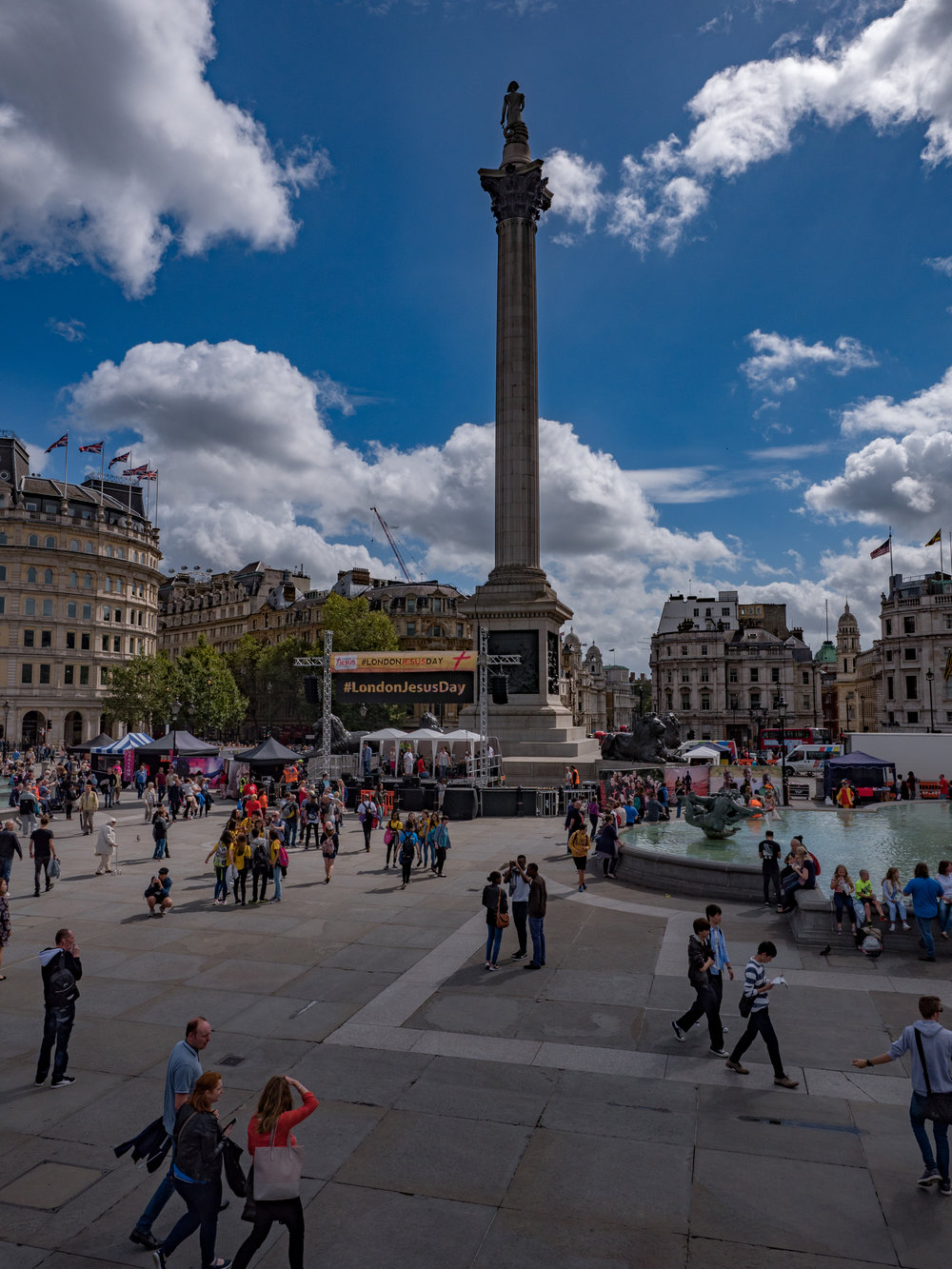
One of the great assets of the micro four-thirds system is its small size and low weight. That’s received wisdom among photographers. Lenses that would reach into the next street and weigh a ton in full-frame or, worse, in medium format, fit the pocket when reduced to the relatively small m4/3 format. That’s the theory, anyway.
The system, flushed with success, is growing not just in terms of unit sales but in the size of the equipment. Bodies have put on the ounces and the waistband is becoming strained — you could not call the 725g Panasonic GH5 a tiny body for instance. The Leica TL2 tips the scales at a frugal 384g despite its much bigger APS-C sensor.

But it is in the lens department that we’ve seen the more extreme evidence of system bloat. True, these new fast lenses are highly capable. We’ve had the 42.5mm f/1.2 Leica DG Nocticron and the 12mm f/1.4 Summilux for some time. By m4/3 standards these are bulky and heavy lenses. But they are dwarfed by the latest Pro primes from Olympus.

The 25mm f/1.2 — an example of which I own — is a superb lens with impressive performance. But at 440g it is over 100g heavier than an equivalent 50mm Leica Summilux-M. At 90mm it is 37mm longer than the Summilux, even without the substantial 38mm hood in place. Even the heavy Leica Noctilux is 10mm shorter and hardly fatter than the Olympus 25mm.
f/1/2 all round
The trend continues as Olympus is seeming to standardise on the fast f/1.2 maximum aperture for its new PRO primes. On the way is a 17mm little brother for the 25mm, another monster by the look of it, and there is a 45mm f/1.2 in the offing.
Micro four-thirds started as a lightweight system, based originally on the PEN format, and the featherweight and tiny lenses created a really compact travel system offering a wide distinction between the new format and then existing APS-C outfits. Like all good things, though, m4/3 has been growing steadily in girth. It’s like looking at a 1963 Mini alongside a 2017 Mini — a completely different vehicle. Only the name and that centre console is left. Similarly, the original Golf was a tiny conveyance compared with today’s car.

Look at it another way, though, and micro four-thirds has really grown up. It is now a wide-ranging system with something for everyone. While those who strive for excellence will be in the market for the bulkier cameras and the Leica DG or Olympus PRO lenses, there are lightweight cameras such as the PEN-F and a plethora of lenses to suit those who value small size and weight above out-and-out performance.
Snags
There is a snag, though. As the system grows in size and scope the gap in size and weight between the best m4/3 and APS-C offerings narrows. Take the Leica TL2, for instance. It’s actually a very lightweight body and the lenses, although not as fast as these new m4/3 professional designs, are very light and extremely competent.
It’s a similar story with other manufacturers. The Fuji X-T2 body weighs only 504g compared with the Panasonic GH5 at a portly 725g. Even the Panasonic GX8 at 487g is only a feather lighter than the X-T2 while the flagship Olympus OM-D E-M1 II is actually 70g heavier than the Fuji.

There are still many reasons to choose micro four-thirds but size and weight is no longer perhaps the biggest deciding factor. There are big advantages, undoubtedly, when it comes to really long telephoto lenses where the m4/3 sensor promotes economy of scale.
But both in terms of cost (the Olympus E-M1 and the Panasonic GH5 both cost north of £1700 compared with the Fuji X-T2 at £1,350) and weight, today’s leading m4/3 cameras are pushing the boundaries. Many might wonder why not go for the larger sensor if there is little to be saved in size, weight and cost.
What do you think are the main reasons to choose m4/3 over APS-C?
_________________

The micro four thirds camera bodies got bigger after a few years of their inception.
The bigger bodies have been available alongside the smaller bodies for much of the micro four thirds existence. It’s generally accepted that the telephoto lens users opt for the bigger camera bodies – which still make the combination smaller than other formats.
Where it gets uncomfortable and therefore unacceptable for me is the introduction of the f1.2 prime lenses, they are all large, heavy and expensive – they defeat the ethos of micro four thirds being light and smaller than the other interchangable lens systems cameras.
On the digital front, it was the introduction of the Olympus OM-D E-M1 II, together with having borrowed its predecessor for a day, that made me decide to sell all of my Canon EOS gear and update my digital system. But I thought that the price of the Olympus OM-D E-M1 II was too high for a camera with a sensor of this size and also that some of the features actually put me off buying one – like the 60 frames per second rate. I know you don’t have to use it, but is was an example of features for features sake I felt.
Having then decided to sell the my Canon EOS and lenses (and I’d been using Canon SLRs since 1989), I ended up buying a Fujifilm X-T2 with 3 Fuji lenses. I was also swayed by the Leica M mount adaptor which I bought at the same time. I have not been disappointed and think that the Fuji is an excellent camera with equally excellent lenses.
I think all modern cameras are good and it’s very difficult to decide on the best system — it all boils down to a distillation of cost v. weight v performance to suit the individual.
I agree with your comments here. My Olympus Pen D has a 32mm f1.9 prime lens which gives the equivalent of 45mm on a full frame camera. It measures 108 x 67 x 50mm, weighs 456g and gets 76 photographs on each film. It is also 55 years old and still works perfectly!
When it comes to comparisons of camera systems you have to look at a variety of factors before deciding which works for you. Chief among those factors IMHO are to properly know the intended use, and the necessity to look at the system as a whole rather than cherry pick individual cases to prove a particular point.
Personally, I’m an amateur landscape, cityscape and travel photographer and I’ve tried all the mainstream mirrorless systems – u43, Fuji and Sony FF in order to evaluate them for my needs. And when I say tried, I mean purchased the gear (second hand), and ran it for a month or so to really understand what it can do.
In the end, I’ve decided that Olympus u43 works best for my needs. The main reasons are:
Size. Once you start looking at equivalent lenses across systems it’s still true that u43 offerings are smaller. For example, I ran the Sony 16-35/4 with the A7rii when I was trying it. It’s a very nice combo but the lens is pretty sizeable. My u43 UWA zoom is the Panasonic 7-14/4 and the difference in size and weight is significant. The Sony lens has slightly better IQ, but the difference is not enormous and both are capable of excellent landscape shots printed large. Similar comparisons can be made for other lenses and whilst there are some comparisons that will be closer – such as the Oly 17/1.8 vs the Sony 35/2.8 – the vast balance of like-for-like comparisons will tip heavily towards u43 from a size/weight perspective.
Image Stabilisation – For travel image stabilisation is a massive advantage. The Olympus system is by far the most effective compared to Fuji (where only a few lenses have IS and of course no IBIS) or Sony (whose IBIS is nice but still a long way from the Olympus).
Body features and ergonomics – Olympus bodies are loaded with lots of very useful features such as focus stacking, Livetime/Livecomp, hi res, Pro-capture and more that the others don’t have. I use these features a lot so they are worth having for me. I also really like the handling of Olympus bodies – they just feel right to me in a way that the others don’t; and don’t even mention the shutter sound on the Sony cameras compared to the E-M1ii!
IQ – I personally find u43 IQ to be more than good enough for my needs. I don’t print billboards and I don’t seek noiseless perfection at 100% magnification in Lightroom. I often do a lot of PP on my images and I really liked the ability for files from the A7Rii to be pushed further than the Olympus, but the truth is that it’s not often I find the Olympus unable to make an excellent image from. It’s good enough and there are lots of excellent landscape photographers using u43 gear to prove it.
The system as a whole – there is so much choice in u43 that it’s hard to imagine there not being something to suit most people. Small and excellent primes like the 45/1.8 & 15/1.7, large and even more excellent primes like the 25/1.2 & 42.5/1.2, budget and quality zoom lenses, super zooms, macro lenses, fantastic telephoto lenses like the 300/4, fisheyes, … the list goes on.
Price – sure you can spend big time on u43, but you don’t have to and going cheap doesn’t mean that you won’t get the results. The Olympus E-M10ii or the Panasonic GX85 are both superb cameras at a great price point and paired with a couple of the f1.8 (ish) primes will deliver results that most will find hard to distinguish from those on the bigger cameras.
So, long post (didn’t mean to go on so long!!) and obviously a case for u43, but I’m not knocking the other systems. Truth is, all modern camera systems are capable of excellent results that are waiting to be exploited by talented photographers.
Paul,
You make a lot of useful points here and I can’t fault your logic. Would you like this to appear as a little article under your byline? You could add a few of your pictures to illustrate the points? If so, email me at mike@macfilos.com and I’ll be happy to work on it.
I don’t really have a view on this, although I would prefer APS-C as a minimum, not for any real reason though.
No, what I am really concerned with is the casual manner in which Mr. Evans goes about photographing and posting pictures of white supremacists.
Something should be done!
I am serial!
A Gore
You’ve lost me there, Stephen. What white supremacists? Do you mean the photo of the guy in the National Portrait Gallery? I don’t recognise him.
No Mike, the guy on the pole in Trafalgar Square!
🙂
Thanks, Mike. An interesting article that highlights a M4/3 development trend that is discreet and many would find surprising.
On your final question of M4/3 versus APS-C, it is also worth noting that full frame need not be so much bulkier, or costly, for those that seek that format.
A search of two well known web sites (camerapricebuster and camerasize.com), indicates that the excellent F/F Sony A7II may be purchased new for substantially less than the M4/3 Olympus OM-D E-MII. While an excellent camera, the Sony A7II is not in the league of its improved brother, the A7RII of course. Some will also feel that the absence of touch screen operation on the Sony A7 series is significant in making a buying choice.
To illustrate the point about comparative F/F price and weight:
M4/3. Olympus OM-D EM-II with ED 25mm f/1.2 Pro lens. Weight: 984 grams. Price: £2,828 currently.
F/F. Sony A7II with FE 55mm f/1.8 Carl Zeiss lens. Weigh: 880 grams. Price: £1,907 currently.
Richard.
Richard, Thank you very much for adding this extra information. It had crossed my mind to include Sony but decided I was complicating the story with too many options. You are quite right, of course, the A7II is a great camera and is easier to find secondhand very cheaply than, say, the OM-D E-M1 II. Bodies are one thing, but lenses inevitably grow as the sensor increases. However, I’m still not quite sure how Leica managed to make such monsters when Sony’s pro offerings are so much smaller (or are they? I’d better check that…). I suspect that a lot of buyers don’t worry too much about sensor size and go on image, advertising, cost. I imagine there are m4/3 owners who don’t realise they have m4/3.
I think its only "outgrown its roots" if it no longer offers small size at all. Yep, the two flagship bodies are considerable size and weight for an Mft, getting into Dslr territory. But they arent the only choice.
An Em10ii and Oly45 or Pana 15mm is still available and still great. Ditto a Gx85. Or the GF/Pen E series for those not needing a VF.
Interestingly, the really small GM5 doesnt seem to have been a big success for Panasonic. Maybe too small = difficult ergonomics. Or maybe buying patterns drive things on less obvious factors.
My concern isnt with the big Pro primes. Its if they ignore smaller and lighter versions for the "holes" in the system. Where’s the f/4 rectilinear UWA? Or weatherproof equivalents to the fuji 23WP and 35WP ? A weatherproofed 17/1.8 on an Em5ii would be a compact beauty, for instance.
For me, mft (with a GX8, G80 and PenF) is certainly good enough in IQ – and great feeling/operating – to stave off my occasional yearnings for an Xpro2. Stepping up to full frame is a different matter, but other than the cost prohibited Leica, no one has built a FF body that i instinctively love just yet. Form factor, handling and ego’s still play a huge part in my decisions. Which is probably where the EM1ii and GH5 have their raison d’etre.
Thanks, Jason, some good points there and all add to the story. There’s no clear-cut answer and choice is a very individual matter. As a matter of interest, I have the GM1 and love it. It’s really tiny and yet takes all those fabulous lenses when required. I’ve looked for a used GM5 but can’t find one. It was a good try, a GM1 with viewfinder, but, as you say, neither model took off. Fiddly, as you say, is probably the reason. The great thing, as you say, is that m4/3 runs right from the GM1 through to the GH5 and Oly OM-Ds — to take your pick.
I’m tempted to consider buying the PanaLeica 100-400/4-6.3 because it offers a FF equivalent 200-800mm lens which at just under 1kg could be carried comfortably and used in a hide with minimum support. Listed at c.£1200, it compares more than favourably with the Canon 800/5.6 L lens weighing 4.5kg … which at c.£12000 is 10x the price for a mere 1/3 stop light gathering advantage. However, M4/3 lenses do not offer the same potential OOF backgrounds as their full frame equivalents when both are used at the same aperture. A M4/3 25/1.2 lens has the same low light gathering capability as a FF 50/1.2 lens … but in terms of DOF, the 25/1.2 is equivalent to FF 50/2.4 … thus superfast M4/3 lenses cannot match the OOF image rendering of e.g. a FF Leica Noctilux … and neither will they match the full aperture OOF effect of a regular 50/1.8 lens.
You are right. The f/1.2 lenses I mentioned are fast in terms of light gathering but have the full-frame equivalence of f/2.4 in terms of depth of field. It’s still pretty fast but won’t produce the same bokeh as a f/1.2 on full frame. On the other hand, many people think that this wider depth of field at a given aperture is an advantage — you get more use out of the light-gathering potential without suffering the wafer-thin depth of field exhibited by, say, the f/0.95 Noctilux. This is just one of the considerations when choose m4/3. As I mentioned, m4/3 comes into its own with long telephotos such as the 100-400mm Leica DG and I know several photographers who have gone from full frame to m4/3 simply because of the weight (and cost) of equivalent tele lenses.
For me, the m43 system has outgrown its roots in size, weight, AND price.
I had a PEN-F (as a second camera), with all of the m4/3 glass I needed including the Pana-Leica 42.5/1.2 – So I was quite invested. I was planning on switching out the PEN-F for the EM-1 II, however when it was announced at $2000 I was so disgruntled that I sold all of my m4/3 stuff. There are no advantages for m4/3 any more.
Quite right….and I think this is a worrying factor for the m4/3 system. With APS-C and FF sensors getting cheaper (not to mention MF in cameras such as the new Fujis and ‘Blads) you have to look long and hard at the cost/weight/size factor. Olympus themselves said that they deliberately hiked the price of the OM-D E-M1 II to polish its professional credentials. With that camera (and the GH5 not far behind) I suspect many customers are doing their sums and opting for an X-T2 or X-Pro2 (or Sony, for that matter). While I like my m4/3 system I am keeping a close eye on developments and will bale out if I feel I can get better options elsewhere.